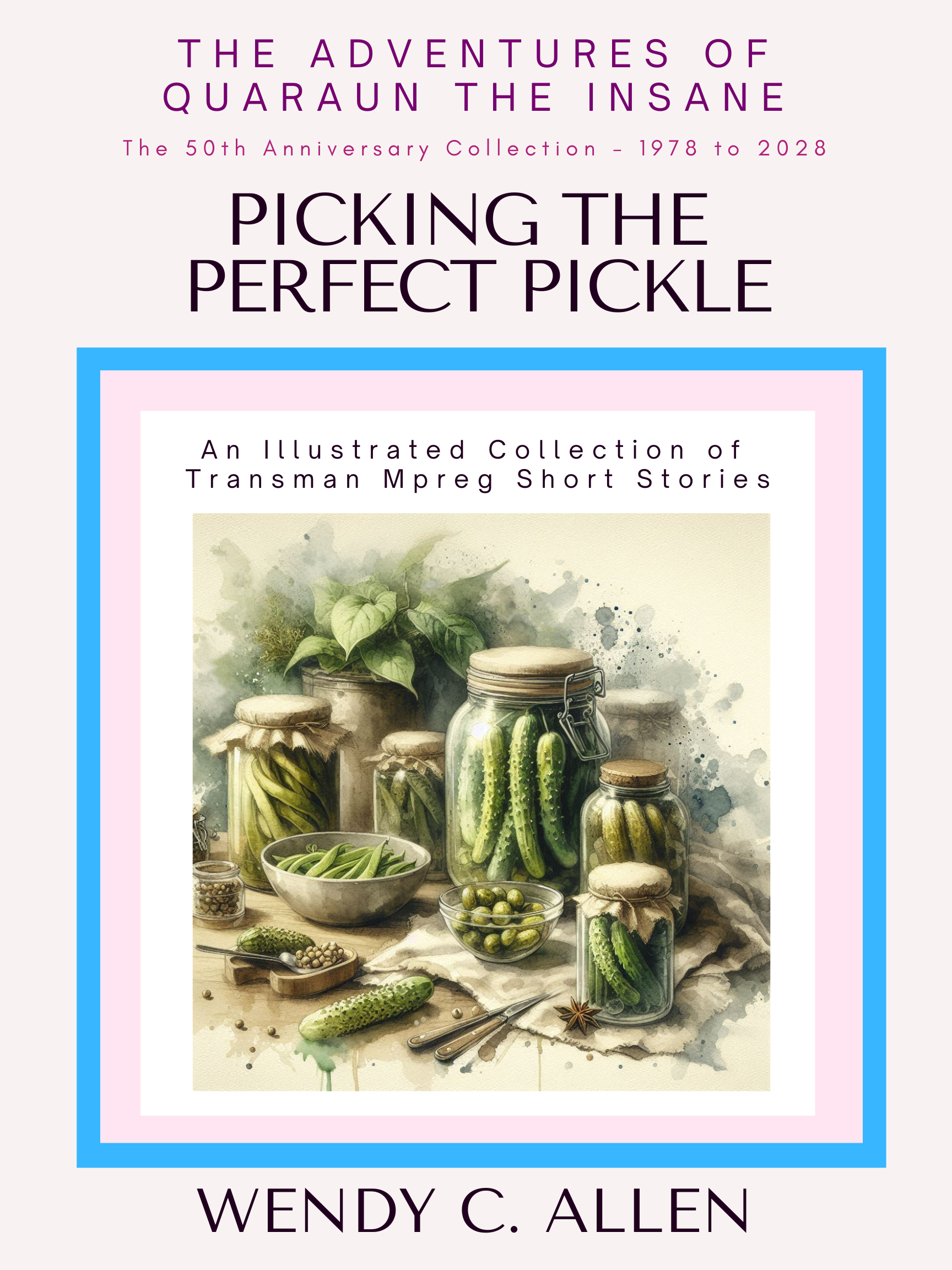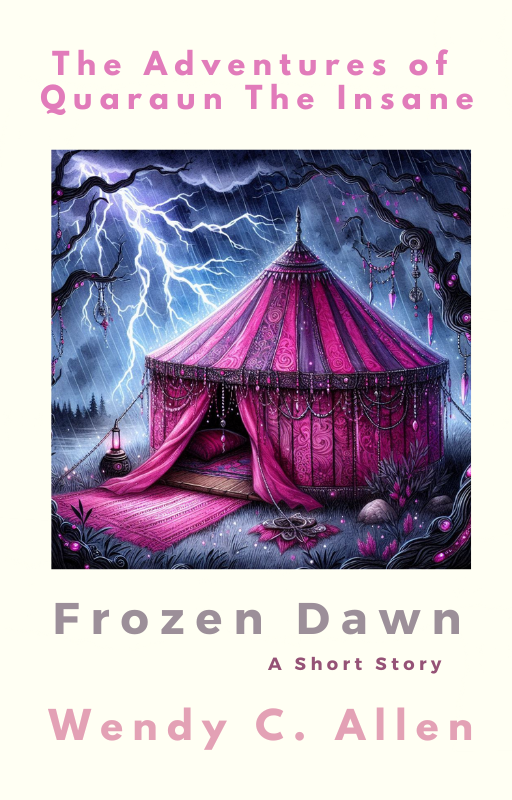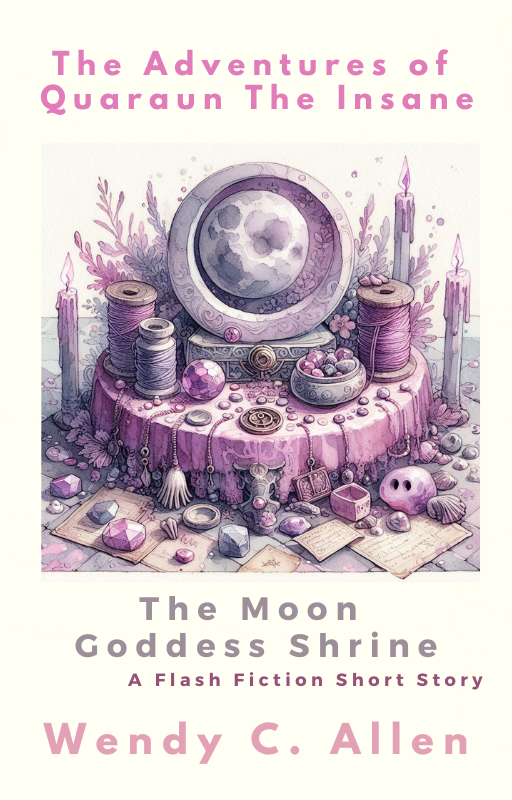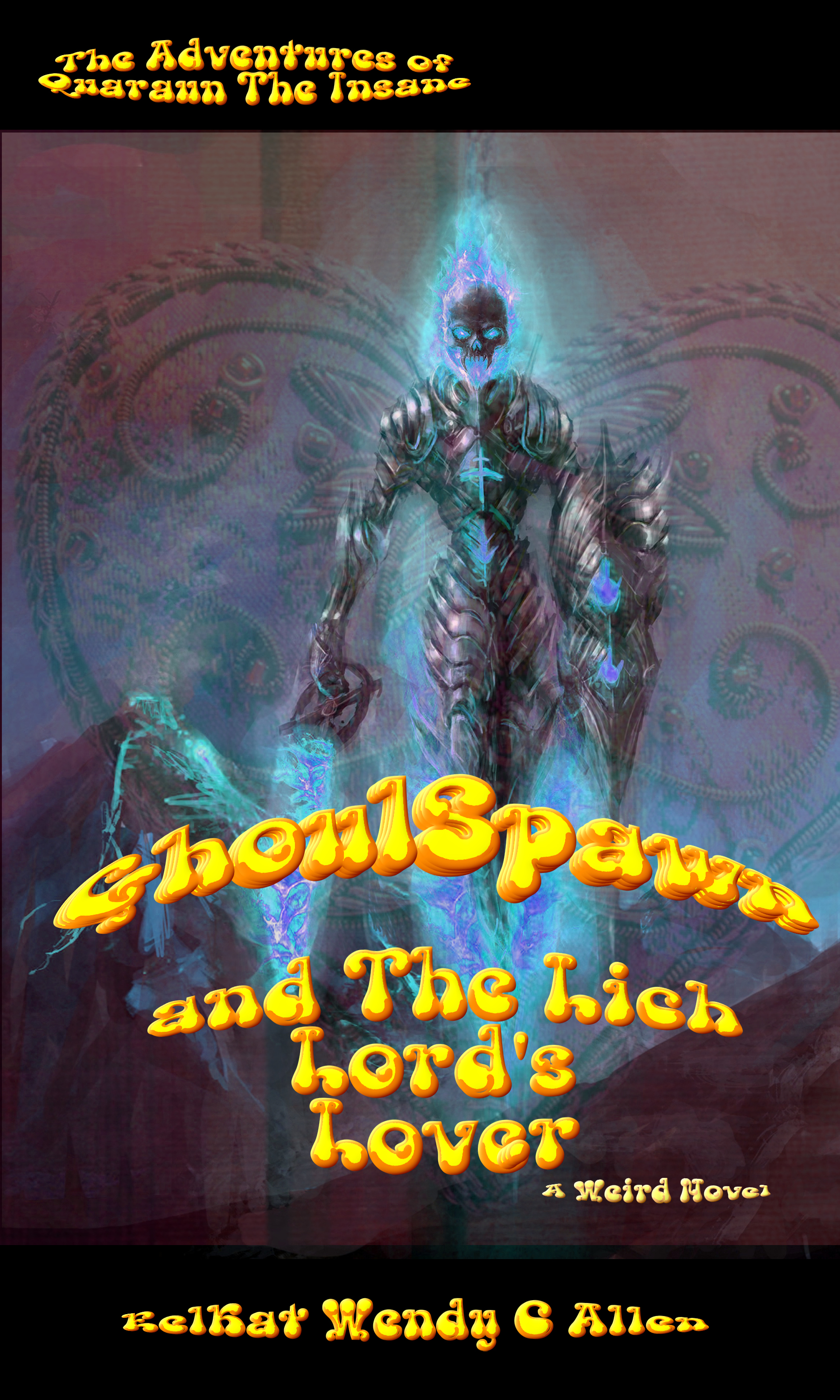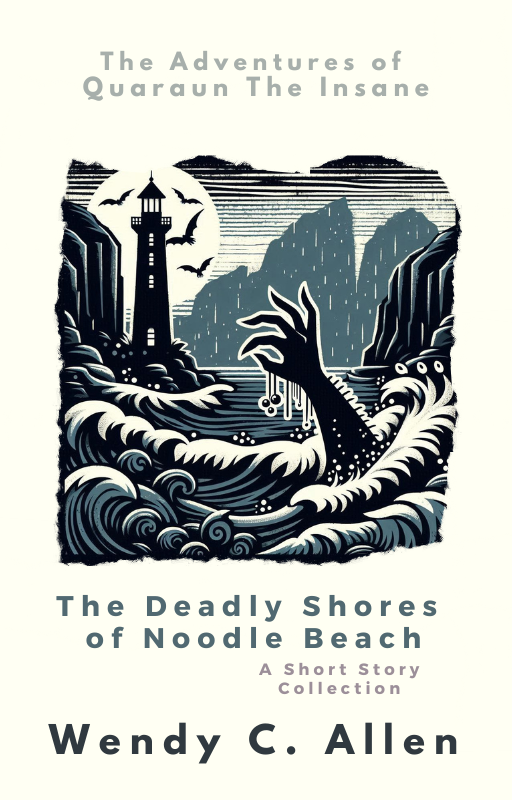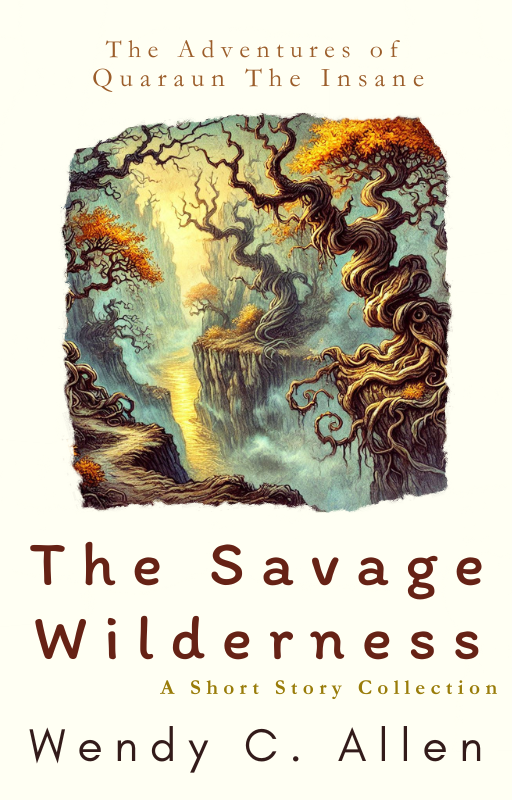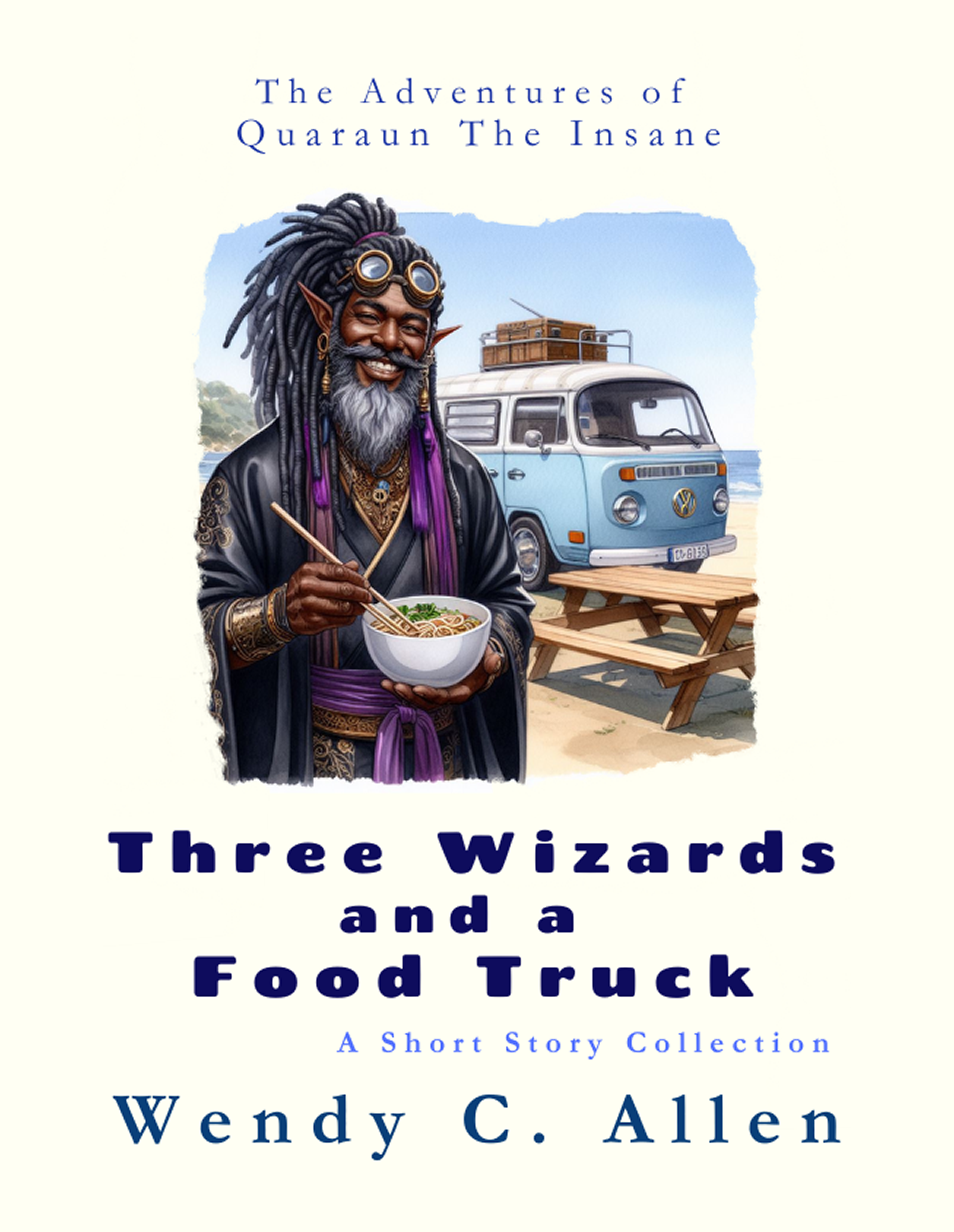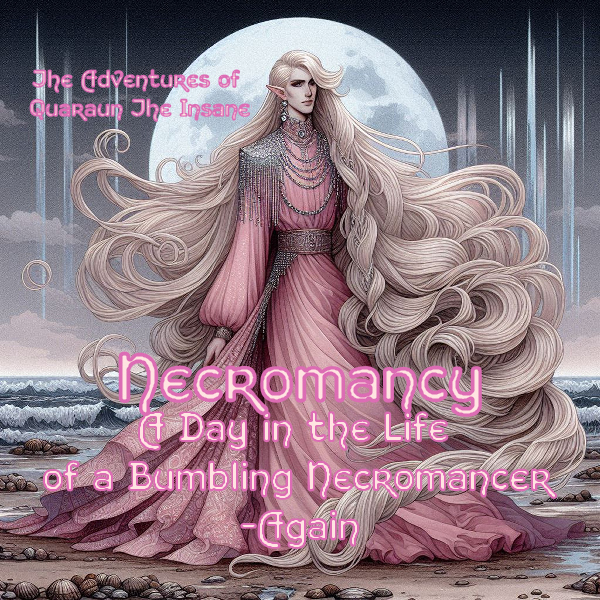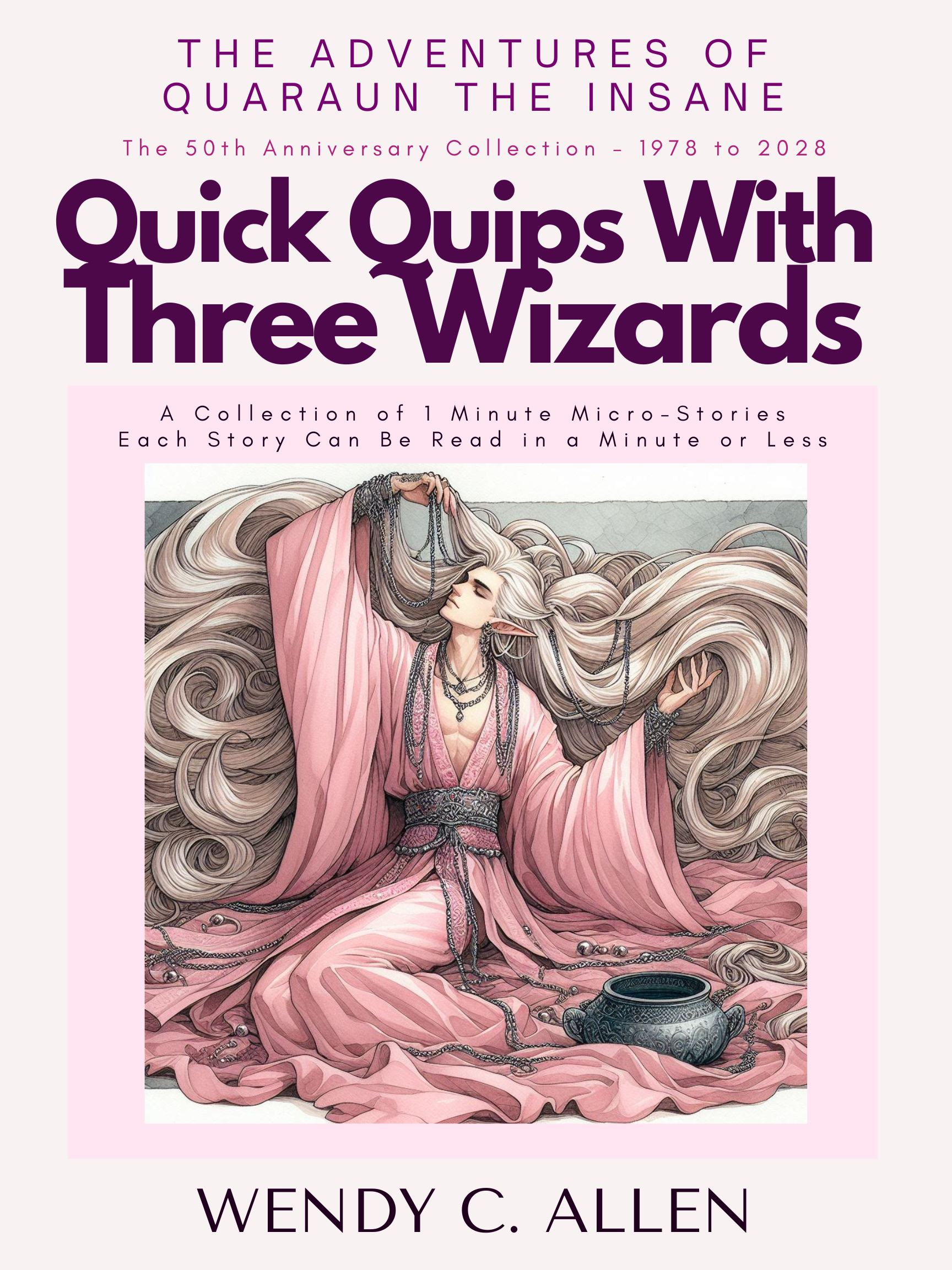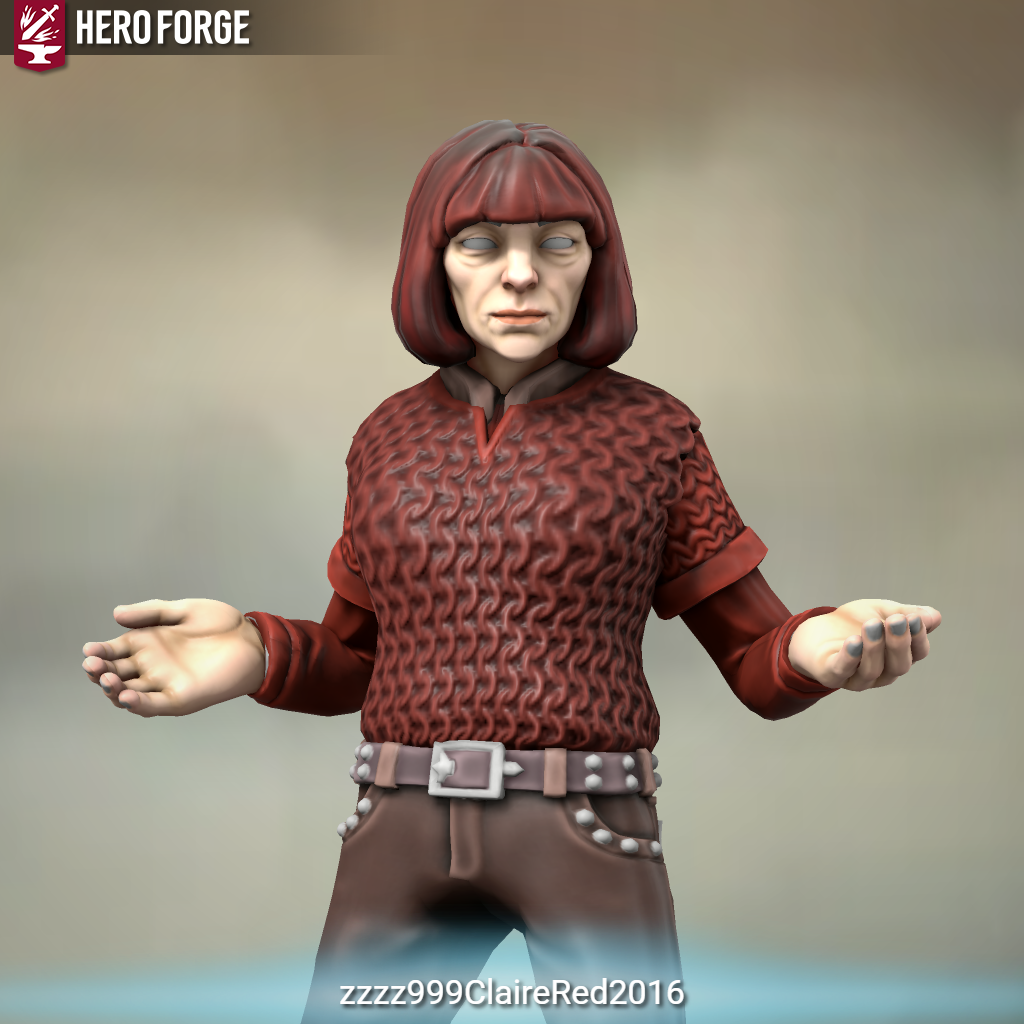Counting Down to the 2028 50th Anniversary of my first published book (September 23, 1978)
 Transman Quaraun (The Pink Necromancer) and his husband King Gwallmaic (aka BoomFuzzy the Unicorn) King of The UnSeelie Court. Main characters of The Adventures of The Pink Necromancer series. Transman Quaraun (The Pink Necromancer) and his husband King Gwallmaic (aka BoomFuzzy the Unicorn) King of The UnSeelie Court. Main characters of The Adventures of The Pink Necromancer series.
This website is a safe zone for LGBTQAI+, pagans, polies, furries, and BIOPIC communities. |
Important:
Fraudulent sites are impersonating Wendy Christine Allen.
- The ONLY official website for Wendy Christine Allen is www.eelkat.com
Fraudulent social media accounts, particularly on Reddit and FaceBook are impersonating Wendy Christine Allen.
- The ONLY official social media accounts for Wendy Christine Allen are listed in the footer here at www.eelkat.com
Any websites and accounts you find online that are NOT on this list are NOT Wendy Christine Allen
Dungeons and Dragons:
The Joys Of Calculating Gold Weight In AD&D 2ed
Important:
Fraudulent sites are impersonating Wendy Christine Allen.
- The ONLY official website for Wendy Christine Allen is www.eelkat.com
Fraudulent social media accounts, particularly on Reddit and FaceBook are impersonating Wendy Christine Allen.
- The ONLY official social media accounts for Wendy Christine Allen are listed in the footer here at www.eelkat.com
Any websites and accounts you find online that are NOT on this list are NOT Wendy Christine Allen
While you are here, please take the time to read this:
Do you know who this woman is?
She might be the woman who murdered my son.
A DM's Worst Nightmare:
The Joys Of Calculating The Weight of Gold...
About to DM in a week, need rule help from DungeonsAndDragons
Dungeons and Dragons:
The Joys Of Calculating The Weight of Gold...
and Everything Else In AD&D 2ed
Sounds like he's NOT playing 5ed if he's calculating weight of gold.
That's a very 2ed thing to do.
AD&D 2ed you have to calculate the weight of everything - cloths, armour, weapons, food, gold, maps, bedrolls, potions, spell scrolls, candles, water flasks, treasure - unless you have some sort of special ability that allows you to carry way more (like having a pack mule or a bag of holding) you are weight limited to only being able to carry 90lbs.
This keeps the game "real" and doesn't allow a character to go crazy on the hoarding of treasure or carrying too many weapons. In 2ed AD&D you also have to calculate how tired you are, how hungry you are, how thirsty you are, how drunk you are, keep track of how much time you spent resting, etc... as you take penalties in battle if you are tired or hungry or drunk.
Because of these "real world flavours" your group is forced to stop and rest every 8 to 12 hours, forced to stop and eat every 4 or 5 hours, and get deeply punished for being drunk and not ready to fight when you get ambushed by Orcs on the road.
The fact that he mentioned this, indicates he's playing 2ed AD&D. If you look in the 3 core books and all the splat books, everything had it's weight listed on the chart.
This means a Paladin, Knight, or Fighter with heavy armour, usually had to have a horse, pack mule, or servant, because just his armour alone often hit the 90lb weight limit.
It also means, if you have heavy armour you drown instead of swim, because the weight pulls you down.
And it means if you defeat a dragon with a vast hoard, you can't keep the entire treasure and players have to pick and choose which gold coins, magic items, etc they are going to take after the battle. Just because the DM is listing off vast amounts of treasure, doesn't mean you get to keep all of it. You only get to keep what you can carry. Maybe you can plan to come back for the rest later, but unless your wizard thinks to cast some huge barrier around the treasure, it'll be taken by thieves long before you get back there with a wagon. If they are carrying a lot of stuff, they'll have to leave something behind if they want to carry a lot of gold coins. That Paladin, may have to strip his armour and leave it behind, if he decides he wants to keep a couple of bags of gold coins.
It's for this reason that when playing AD&D many players opt to buy horses, mules, donkeys, wagons, ox carts, and servants early on in the game, that way they can carry extra food and supplies, and when the time comes, take way more treasure then just what they can carry of their 90lb limit minus their armour, supplies, and weapons.
It's why I always save my early winnings/money, have a character who "is a wizard for hire" thus does odd jobs at every village he goes to (earning more money than just what he gets adventuring), and is also a merchant so sets up a new shop in every village (and thus has a steady income flow coming in), and as soon as he can afford it - buys a whole damn caravan - camels, horses, elephants, servants... other players see me buy this shit early in the game and they laugh...
...they'll tease my character for having a job in addition to being an adventurer, and laugh over the big over the top caravan that travels along behind him, but later in the game when we are faced with a dragon hoard, and I'm the only one taken large amounts of the treasure with me, including statues, weapons, art works, a whole wagonload of gold bars, and thousands of gold coins, while they are each limited to a couple of rings, 10 gold coins, or small jewelry... they aren't laughing then are they... then they are wishing they had servants to carry bags of treasure, saddle bags of treasure on horses and camels, ox cart loads of treasure.
The weight limit and the need to calculate everything you are carrying really gets some players who don't realize how heavy things are and how very little treasure they get to keep if they didn't come prepared with a way to carry it back. And people wonder why I always end up with these super wealthy characters. Duh! I planned ahead and had them calculating the weight of gold early in the game, so they knew how many servants, horses, camels, ad wagons they needed in their personal caravan. Sure maybe playing a character like that is not standard, but heck, I've been playing D&D for 40 years now. I've learned a thing or two about how to get to keep the gold after you win the battles. :P
Of course, the whole game, my character is also eating like a king, because he's got a pack mule loaded with food bags, while everyone else is eating the rations they are limited to because of the heavy weight of food. AND my character always sits on chairs out in the wilderness, because, he's got himself a chair on his pack mule. No sitting in the dirt for my aristocrate High Elf...who also doesn't have to walk, because hey... in AD&D Litters are a thing, and if you buy one and 4 to 6 servants, you can sit on a throne while they carry you.
I love playing me some Persian High Elf wizard merchants with a caravan, because you can really go over the top with them.
2ed AD&D, definitely makes you really stop and think about everything you take with you on the trip because everything has weight and you can't just pick up everything you see and carry it with you. Get a new sword on the road? You got to toss the old one by the wayside, because both are too heavy to carry at once.
Some people prefer AD&D because this factor forces characters to keep it real when it come to carry ons, while others hate AD&D because it doesn't allow them to just go all anime and carry a dozen different swords at once.
The Next Day...
Okay, found my player's handbook (my brother had it, had to go get it from him).
I have BOTH the original AD&D set of core books (the orange spine editions) AND the more commonly used AD&D 2ed set of core books.
So, the info you are looking for is in the AD&D 2ed PHB on p.13 & 14 Ability Scores: Strength and p.66-79 (Chapter 6: Money and Equipment).
"Weight allowance is the weight (in pounds) a character can carry without being encumbered (encumbrance measures how a character's possessions hamper his movement - see Glossary). These weights are expressed in pounds. A character carrying up to the listed weight can move his full movement rate."
~p.13 AD&D 2ed PHB
In addition to this carry weight, there is also a lift weight, maximum press, etc. Used mostly for fighters to know how much they can lift and swing over their heads in battle.
There is also charts for "Open Doors" and "Bend Bars" and "Lift Gates", which are used to determine if a character can force open a heavy or stuck door, break out of jail cell bars, or lift a gate or fallen tree to let the others pass under it.
Now, It gets really complicated reading and cross referencing all these charts, because they are different for every character. Each character has to roll out their strength stats according to their race and age and gender and class and height. No 2 characters are going to have the same weight limits.
In the 3 games groups I was in, each DM had made a home brew rule canceling out these charts entirely and declaring that everyone just had a weight limit of 90lbs regardless of race, class, etc. his made it easier for the DM to run the game, by making it easy for him to remember what each character's weight limit was.
But if you want to calculate off the actual chats. They look like this:
- Ability Score +/- DEX/Hit Probability +/- Damage Adjustment = Weight Allowance & Max Press & Open Doors & Bend Bars & Lift Gates
- 1 -5 -4 = 1 & 3 & 1 & 0%
- 2 -3 -2 = 1 & 5 & 1 & 0%
- 3 -3 -1 = 5 & 10 & 2 & 0%
- 4/5 -2 -1 = 10 & 2 & 3 & 0%
- 6/7 -1 -0 = 20 & 55 & 4 & 0%
- 8/9 -0 -0 = 35 & 90 & 5 & 1%
- 10/11 -0 -0 = 40 & 115 & 6 & 2%
- 12/13 -0 -0 = 45 & 140 & 7 & 4%
- 14/15 -0 -0 = 55 & 170 & 8 & 7%
- 16 -0 +1 = 70 & 195 & 9 & 10%
- 17 +1 +1 = 85 & 220 & 10 & 13%
- 18 +1 +2 = 110 & 225 & 11 & 13%
- 18/01-50 +1 +3 = 135 & 280 $ 12 & 20%
- 18/51-75 +2 +3 = 160 & 305 & 13 & 25%
- 18/76-90 +2 +4 = 185 & 330 & 15(3) & 35%
There are another dozen or so lines on the chart, but you get the idea, right?
Simply, yes?
And that's just the first chart... wait till you have to learn THAC0!
You're probably wondering what your ability score is? To find that you roll 3d6 and get a number from 3 to 18. That is your ability score.
What's your dexterity? To find that you roll 3d6 and get a number from 3 to 18. That is your DEX score.
Repeat this to find out your Constitution, Intelligence, Wisdom, and Charisma. You'll need these numbers to calculate how much weight you can carry as well, once you cross reference all the chart, which I'm not putting up here, just go look them up in the Player's Handbook.
Okay...
Once you've gotten all the charts figured out, and determined your BASE Strength/Weight ability, now it's time to adjust that even more with the race chart on p.20.
- Dwarf +1 Con -1 Char
- Elf +1 Dex -1 Con
- Gnome +1 Int -1 Wis
- Halfling +1Dex -1 Str
Next you head to p.24 where you find a chart for your height, another for your weight, another for your age, and another for ageing effects. You cross references the numbers of each of these charts, based on your race, to further calculate your weight allowance.
From pages 25 to 45 you find a few dozen more charts, based on your class. Each class has it's own set of charts, each varying by your race. These numbers and modifiers are further calculated, again raising or lowering your weight allowance.
Think we are done yet?
Nope.
Over on p.50 to 65 you add your character's proficiencies and skills (known as feats in 3.5ed onward), and you guessed it... these change your weight allowances yet again.
FINALLY on page 66, you now know how much shit tons loads of crap and junk your character can carry, and now it's time to figure out how much money he has, then send him off to market to buy things, while calculating how much they weigh.
Money in AD&D 2ed is as follows:
- Copper Piece/Coin (cp) = 1cp = 1/10sp = 1/50ep = 1/100gp = 1/500pp
- Silver Piece/Coin (sp) = 10cp = 1sp = 1/5ep = 1/10gp = 1/50pp
- Electrum Piece/Coin (ep) = 50cp = 5sp = 1ep = 1/2gp = 1/10pp
- Gold Piece/Coin (gp) = 100cp = 10sp = 2ep = 1gp = 1/5pp
- Platinum Piece/Coin (pp) = 500cp = 50sp = 10ep = 5gp = 1pp
Each characters starts with the amount of gold his class times a dice roll gives him:
- Warrior 5d4x10gp
- Wizard 1d4+1x10gp
- Rogue 2d6x10gp
- Priest 3d6x10gp*
*Priests can only purchase equipment and goods and must give to his church all but 3 of the remaining gp, as it is assumed his church provided his equipment and gave him 3gp of spending money.
Have you got a DM Screen?
The best way to not look like a fool in front of characters for forgetting the basics, is to get a DM screen for the campaign you are running. Each ed had different rules, and each setting within each edition as different rules.
For example 2ed Ravenloft you take Sanity Hits and slowly go Insane, rather than taking Damage Hits.
2ed SpellJammer your characters have to keep track of gravity, oxygen levels, and the stability of the barrier around their ship that keeps them from just being sucked into the void of space.
In SpellJammer, player characters are Elves and Mind Flayers. In Ravenloft, Elves don't exist and Mind Flayers are monsters in every basement.
In Forgotten Realms you can play Drow as player characters. In every other setting Drow are evil monsters.
The DM screen, has all the stats, hit throws, saving throws, THACO, weights, basic stuff each class, race can do, etc. It has the base rule for the edition in question and any variations that are specific to the setting.
Usually you can run a whole game, just using the stats off the DM screen. The stats charts are on the side that faces you, while some thematic picture is on the side facing the players to get them in the mood of the setting theme.
AD&D 2ed is definitely the most rules heavy, has the most extra stats to keep track of etc. Whole 5ed is the most beginner friendly for not being quite so rules heavy.
If you are looking to play D&D "out of the box" with out any need for the 3 core rule books, you should look into the Box sets: Castle Ravenloft, Wrath of Mardalon, Legend of Drizzt, and Temple of Elemental Evil. They cost around $60 each, and are the rarely ever mentioned 4.5ed that most players are not even aware exists. Each box includes a 16 page rule books (simple to learn) and 100+ game tiles, 100+ minis, and 6 already rolled out player characters with reusable cardboard stats charts.
Most hard core gamers HATE the 4.5ed most of all, but it was designed to teach children how to play D&D. So kids as young as 8, can jump in and play, without having to know the huge amounts of rules from the 3 core books.
The 4.5ed is a great way for someone to get back into the game after a long break. Gets you familiar with the basics in 15 minutes and has you ready to run a game even if you've never heard of D&D before. Definitely something you might be interested in looking into.
4.5ed D&D



















And yes, those Magic the Gathering ones are part of the 4.5ed D&D set.
If you didn't know, Magic the Gathering is the card game edition of Dungeons and Dragons.
Ah! Then you want SpellJammer
--- Elves in Spaaaaaaaace!
Basical Elves of LSD, who teamed up with Mind Flayers (who are player characters in SpellJammer) and are on a Hamster murdering bloodbath across the galaxy in an intergalactic flying pirate ship.
Yep.
Got one of those.
Got 3 of those actually.
Plus one is also an opium addict and another is an LSD addict. AND they are the guys you would send for if you need help... provided you could first drag them from the tavern and sober them up enough to get them casting the right spells at the right people, that is! LOL!
Mine? His inability to cast spells properly is why he gets called "Quaraun the Insane" which he hates.
How mine got started was in a AD&D2ed Temple of Elemental Evil Campaign, using our Elf wizards we had already been using in SpellJammer. He was just your average ordinary bumbling wizard when I designed him, but then one of the other player's drugged his flask, and the DM had this randomized fumble chart he wanted to try out, and next thing we knew, the wizard was casting stuff like "dancing hippos" (which brought a purple hippo in a tutu into the battlefield) and "raining hearts" (candy hearts rained from a rain cloud over the wizards head for hours). (YES - this is why some people hate, hate, hate, hate, HATE the SpellJammer setting - wait til Rhino Warriors attack, riding on Giant Space Hamsters - these are ACTUAL things you can find n the SpellJammer handbooks. - Did I mention SpellJammer was basical Elves on drugs? Best D&D setting EVER! Insanity in space. Definitely not for the player looking for a serious game, that's for sure! LOL!)
We had 5 players who were wizards (the DM thought it would be nice to try an all one class game) and no one knew who it was who was drugging the others' drinks, so all the wizards blamed each other and were casting spells to drug each other.
We ended up with an entire party of drunk, drug addict, extremely high, High Elf wizards who couldn't get anything done, because we were too busy tossing pink hamsters and purple bats at each other. One wizard turned another wizard into a parrot, so the parrot wizard spent every turn as a parrot (the spell lasted like 5 or 6 turns) saying:
"I sit on his head in poop in his face."
DM would roll the dice and be: "He has successfully sat on your head and shit in your face.... I bet you wish you hadn't turned him into a parrot now?"
Our poor DM. He'd give us these options to go hunt monsters and all we were doing was looking for taverns to get drunk at and towns to blow up with our miscast spells. It was hysterical. Then after the game ended (months later - ended with us going off to attack Orcs while we were all high and drunk, and we together cast this massive multi-wizard spell, that ended up blowing up the whole mountain and us along with it) I started writing novels about him (5 a published so far). It is so much fun writing a wack-a-doodle wizard. :)
Fantasy has way too many serious wizards. Bumbling wizards are way better. I think Fantasy novels need more of them.
And there is nothing more fun in AD&D then playing a high Spelljammer High Elf. You want a night of absolute insanity, you want to play SpellJammer, or is you need something even more psychotically insane, you can try to find 1st ed game setting Metamorphosis Alpha. It's even more insane then SpellJammer.
What Is This Site?
I'm an author. This is an author home page. It's about me, my life, my books, my hobbies, my home town, and anything else that applies to me and my life.
Since starting my writing career in 1978, I have written 130+ novels, 2,000+ short stories, 6,000+ non-fiction articles (ALL are found on this site), a few dozen stage plays, 12,000+ blog posts, and a few comic book scripts for Disney's Uncle Scrooge and Donald Duck (I only worked for Disney one year (in 2005) and only wrote a few stories for their Danish comic books).
NOTE: I ONLY write the Quaraun series (aka The Twighlight Manor series aka The Adventures of Quaraun the Insane). In recent years there has been an issue with impersonators trying to pass books off as written by me, notably several non-fiction and Erotica books. I write neither nonfiction nor Erotica.
ALL of my books and their cover arts are listed on my website here. Beware of any books you find claiming to be me. If the books are NOT listed here on my website, they are NOT my books.
In fiction works, I specialize in Weird/Bizarro Tales set in 40th century CyberPunk-Quasi Medieval, Cozy Dark Fantasy and Science Fiction worlds featuring an intersex Elf and his Faerie husband main characters. I DO NOT WRITE ANY OTHER SERIES - THIS SERIES IS THE ONLY ONE I WRITE.
Non-fiction (found ONLY here on my site) is daily updates of events in my life, and how-tos on how I write my novels.
I DO NOT write Erotica.
I DO NOT write books with HUMAN characters.
The Erotica books and books with Human characters, that you are finding, are written by scammers trying to impersonate me.
There is an ongoing FBI investigation into this matter. If you find any such books, please report them to FBI Agent Andy Drewer @207–774–9322
People always ask why I have a video recorder running 24/7. Watch these 4 videos of The Scarborough Walmart.
I have a video recorder running 24/7. Because this parking lot is where I was attacked a second time by the woman who crippled me with the golf club at Southern Maine Community College in 2013 (who also murdered my 8-month-old son at the same time) this is the location of her 2nd attack, the July 2016 attack with a shopping cart, the attack that left me in a wheelchair and despite over 200 "security cameras" and signs saying there are cameras in use... the police did not find even ONE actual REAL camera. Every "security camera" on this building and parking lot was ALL fake "dummy cameras" and that is why there is no video footage of my son's murderer.
I started carrying a camera 24/7 the very next day after Scarborough police informed me they could not identify the blonde woman who attacked me or her gold Volvo 240GL station wagon, because EVERY CAMERA at this store's parking lot was an empty case with no real camera inside it. My son would be 12 years old this Christmas 2025, and his murderer walks free, still unidentified because this parking lot did not have real cameras.
Those things that look like cameras on the building and light poles, are fake, according to the Scarborough Police Department. That is why I have a camera running 24/7, because my son's killer walks free because there was no camera the day we were attacked.
While you are here, please take the time to read this:
Do you know who this woman is? She might be the woman who murdered my son.
146 Portland Ave, Old Orchard Beach, Maine, is NOT FOR SALE.
And I'm sick of real estate agents who are too incompetent to research land ownership before they show up to stick a for sale sign in my yard.
The fact of the matter is, my son was murdered in 2013, and the friends and family of the murderer think it is funny to keep ILLEGALLY listing my land for sale, because apparently their child murdering bitch friend didn't hurt me enough by crippling me with a golf club, ripping my baby out of my 8 month pregnant belly and beating his brains out on the ground with a golf club.
Also, her friends and family like to gaslight me by doxing me on ufo and alien abduction forums, while pretending to be me, and trying to make it look like I believe in ufos or aliens, even though I think people who believe in ufos are raving lunatics and people who claim to be alien abductees are crazy.
So, yeah, my son was murdered and the murder's friends and family endlessly harass me, my friends, and my family both online and offline, and I'm not happy with it at all.
There is an ongoing FBI investigation into this matter.
The FBI is looking for information into:
- identifying my son's murderer,
- identifying the scammers who listed my land for sale,
- identifying the impersonators who pretend to be me both online and offline,
- the harassers who are harassing the homeless man and sending the UFO nuts to harass him...
- If ANYONE tells you 146 Portland Ave Old Orchard Beach, Maine is for sale:, please report them to FBI Agent Andy Drewer @207–774–9322
- If ANYONE tells you I believe in aliens, demons, or UFOS, please report them to FBI Agent Andy Drewer @207–774–9322
- If ANYONE tells you my homeless friend is an alien, a demon, a cryptid, or named Etiole for sale:, please report them to FBI Agent Andy Drewer @207–774–9322
I'm going to repeat it because I'm tired of people showing up and making offers:
146 Portland Ave, Old Orchard Beach, Maine, is NOT FOR SALE.
There is NO ONE who has authorization to use my land.
NO ONE.
Not my mother.
Not my father.
Not Ben.
Not my mother’s Atwater relatives.
No one.
If ANY ONE hires you to do ANYTHING on my land, know that you are doing it ILLEGALLY and WITHOUT my knowledge or permission.
My mother has ZERO legal right to hire you to do anything at 146 Portland Ave. Old Orchard Beach, Maine.
My father has ZERO legal right to hire you to do anything at 146 Portland Ave. Old Orchard Beach, Maine.
Ben has ZERO legal right to hire you to do anything at 146 Portland Ave. Old Orchard Beach, Maine.
My mother’s Atwater relatives have ZERO legal right to hire you to do anything at 146 Portland Ave. Old Orchard Beach, Maine.
While you are here, please take the time to read this:
Do you know who this woman is? She might be the woman who murdered my son.
How did you build your audience?
Not online, that's for sure.
aka How to sell ten million books
aka How I sold ten million books.
The Park Bench Method of Writing
(just the article)
or
The Park Bench Method of Writing
(with the list of 10k writing prompts - takes a LONG TIME to load - SEVERAL MINUTES!)
I Think UFO and Alien Believers Are Weird Here's Why...
Does every writer have to deal with this shit?
|
Thank you for stopping by and have a nice day! ꧁✨🌸🔮🦄🔮🌸✨꧂ And if it’s your birthday today: ִֶָ𓂃 ࣪˖ ִֶָ🐇་༘࿐꧁ᴴᵃᵖᵖʸ☆ᵇⁱʳᵗʰᵈᵃʸ꧂🤍🎀🧸🌷🍭 |
 |
Get an email whenever Wendy Christine Allen 🌸💖🦄 aka EelKat 🧿💛🔮👻 publishes on Medium.
I also write on these locations: | Amazon | Blogger | GumRoad | Medium | Notd | OnlyFans | Tumblr | Vocal |


















































